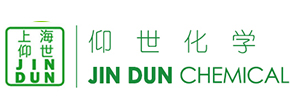120
The Benefits of Using Non-Silicone Oxygen Bleach Stabilizer for Linen Yarn
2023/4/23
Linen yarn is a natural fiber that has many advantages such as high strength, good moisture absorption, and antibacterial properties. However, linen yarn also has some drawbacks such as low whiteness, high impurity content, and poor dyeing performance. Therefore, linen yarn needs to undergo a scouring and bleaching process before dyeing or printing.
One of the most common methods for bleaching linen yarn is using hydrogen peroxide, which is an environmentally friendly and effective oxidizing agent. However, hydrogen peroxide is also unstable and prone to decomposition under alkaline conditions or in the presence of metal ions. This can reduce the bleaching efficiency and damage the fiber structure.
To solve this problem, oxygen bleach stabilizer (OBS) is usually added to the bleaching solution to inhibit the decomposition of hydrogen peroxide and protect the fiber from damage. OBS can be classified into two types: silicon-containing stabilizer and non-silicon-containing stabilizer. Silicon-containing stabilizer, such as sodium silicate, is widely used because of its low cost and good performance. However, silicon-containing stabilizer also has some disadvantages such as forming “silicon scale” on the equipment and fabric surface, increasing the water hardness, and leaving metal ion residue on the fiber.
Non-silicon-containing stabilizer, such as phosphonates, polyacrylates, and polyamines, can overcome these drawbacks and provide better bleaching results. However, non-silicon-containing stabilizer is usually more expensive and less available than silicon-containing stabilizer.
In this article, we will introduce a new type of non-silicon-containing oxygen bleach stabilizer that is synthesized from oligomeric acrylic acid and magnesium salt. We will also discuss its advantages and applications in linen yarn bleaching.
Synthesis of non-silicone oxygen bleach stabilizer
The synthesis of non-silicone oxygen bleach stabilizer from oligomeric acrylic acid and magnesium salt involves two steps: first, an acrylic acid oligomer is synthesized using potassium peroxodisulfate as an initiator and acrylic acid as a monomer; second, the acrylic acid oligomer is compounded with magnesium salt to form a non-silicone oxygen bleach stabilizer.
The optimal conditions for the synthesis were determined by orthogonal test method, which were: acrylic acid monomer concentration 25%, initiator dosage 5%, oligomeric acrylic acid and magnesium salt compound ratio 5:1, reaction temperature 65 °C, reaction time 4 h. Under these conditions, the product had high chelated iron value (239.314 mg/g) and chelated calcium value (145.000 mg/g), indicating its strong ability to chelate metal ions that can catalyze the decomposition of hydrogen peroxide.
Bleaching performance of non-silicone oxygen bleach stabilizer
The bleaching performance of non-silicone oxygen bleach stabilizer was evaluated by comparing it with sodium silicate as a conventional silicon-containing stabilizer. The bleaching process was carried out in a one-bath alkali-oxygen system with the following conditions: sodium hydroxide concentration 10 g/L, hydrogen peroxide concentration 10 g/L, temperature 95 °C, time 60 min. The dosage of non-silicone oxygen bleach stabilizer was determined to be 4 g/L through indicators such as the decomposition rate of hydrogen peroxide and whiteness.
The results showed that non-silicone oxygen bleach stabilizer had a better ability to inhibit the decomposition of hydrogen peroxide than sodium silicate. The decomposition rate of hydrogen peroxide was only 9.8% when using non-silicone oxygen bleach stabilizer, while it was 16.7% when using sodium silicate. This means that more hydrogen peroxide was preserved for bleaching when using non-silicone oxygen bleach stabilizer.
Moreover, non-silicone oxygen bleach stabilizer provided bleached linen yarn with a superior degree of whiteness and less metal ion residue than sodium silicate. The whiteness of linen yarn was increased by 12.6% when using non-silicone oxygen bleach stabilizer, while it was only increased by 8.9% when using sodium silicate. The metal ion residue on linen yarn was reduced by 86.7% when using non-s
One of the most common methods for bleaching linen yarn is using hydrogen peroxide, which is an environmentally friendly and effective oxidizing agent. However, hydrogen peroxide is also unstable and prone to decomposition under alkaline conditions or in the presence of metal ions. This can reduce the bleaching efficiency and damage the fiber structure.
To solve this problem, oxygen bleach stabilizer (OBS) is usually added to the bleaching solution to inhibit the decomposition of hydrogen peroxide and protect the fiber from damage. OBS can be classified into two types: silicon-containing stabilizer and non-silicon-containing stabilizer. Silicon-containing stabilizer, such as sodium silicate, is widely used because of its low cost and good performance. However, silicon-containing stabilizer also has some disadvantages such as forming “silicon scale” on the equipment and fabric surface, increasing the water hardness, and leaving metal ion residue on the fiber.
Non-silicon-containing stabilizer, such as phosphonates, polyacrylates, and polyamines, can overcome these drawbacks and provide better bleaching results. However, non-silicon-containing stabilizer is usually more expensive and less available than silicon-containing stabilizer.
In this article, we will introduce a new type of non-silicon-containing oxygen bleach stabilizer that is synthesized from oligomeric acrylic acid and magnesium salt. We will also discuss its advantages and applications in linen yarn bleaching.
Synthesis of non-silicone oxygen bleach stabilizer
The synthesis of non-silicone oxygen bleach stabilizer from oligomeric acrylic acid and magnesium salt involves two steps: first, an acrylic acid oligomer is synthesized using potassium peroxodisulfate as an initiator and acrylic acid as a monomer; second, the acrylic acid oligomer is compounded with magnesium salt to form a non-silicone oxygen bleach stabilizer.
The optimal conditions for the synthesis were determined by orthogonal test method, which were: acrylic acid monomer concentration 25%, initiator dosage 5%, oligomeric acrylic acid and magnesium salt compound ratio 5:1, reaction temperature 65 °C, reaction time 4 h. Under these conditions, the product had high chelated iron value (239.314 mg/g) and chelated calcium value (145.000 mg/g), indicating its strong ability to chelate metal ions that can catalyze the decomposition of hydrogen peroxide.
Bleaching performance of non-silicone oxygen bleach stabilizer
The bleaching performance of non-silicone oxygen bleach stabilizer was evaluated by comparing it with sodium silicate as a conventional silicon-containing stabilizer. The bleaching process was carried out in a one-bath alkali-oxygen system with the following conditions: sodium hydroxide concentration 10 g/L, hydrogen peroxide concentration 10 g/L, temperature 95 °C, time 60 min. The dosage of non-silicone oxygen bleach stabilizer was determined to be 4 g/L through indicators such as the decomposition rate of hydrogen peroxide and whiteness.
The results showed that non-silicone oxygen bleach stabilizer had a better ability to inhibit the decomposition of hydrogen peroxide than sodium silicate. The decomposition rate of hydrogen peroxide was only 9.8% when using non-silicone oxygen bleach stabilizer, while it was 16.7% when using sodium silicate. This means that more hydrogen peroxide was preserved for bleaching when using non-silicone oxygen bleach stabilizer.
Moreover, non-silicone oxygen bleach stabilizer provided bleached linen yarn with a superior degree of whiteness and less metal ion residue than sodium silicate. The whiteness of linen yarn was increased by 12.6% when using non-silicone oxygen bleach stabilizer, while it was only increased by 8.9% when using sodium silicate. The metal ion residue on linen yarn was reduced by 86.7% when using non-s

